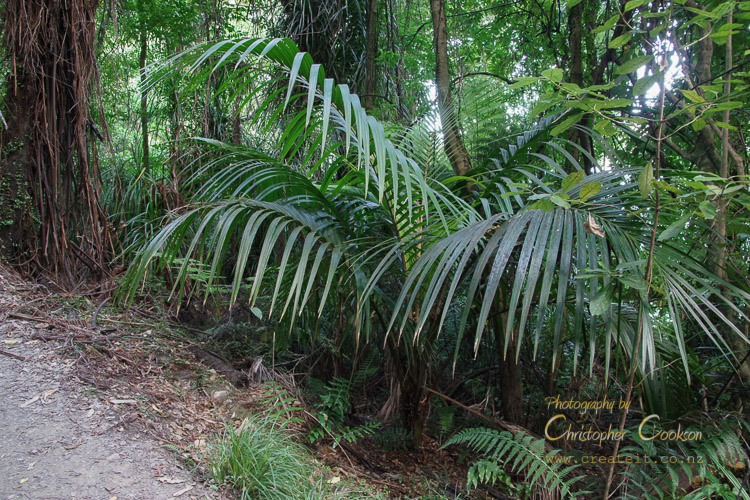Nikau Palm (Phopalostylis sapida)
Last Modified: 1-2-2020 7:58

© Christopher Cookson License this image
The Nīkau Palm (Phopalostylis sapida) is the world's southernmost palm species, and only palm native to New Zealand. Found as far south as Banks Peninsula in the South Island, the Nīkau is found throughout the Marlborough Sounds, however as it is very slow growing, and depends on forest cover, it may not occur in areas of regenerating native forest.
Nīkau can grow up to around 26m tall although most are around 10-15m, and have long leaves measuring between 3-5m long. Fruits take about a year to mature, and are eaten by the native wood pigeon (kererū). Germination of seeds occurs readily, however many years pass before a trunk is formed.
The habitat for nīkau is temperate rainforest. Nīkau depend on forest cover and an ample supply of water, so in Marlborough, are confined to the Marlborough Sounds, as the drier, more exposed southeastern Marlborough provides an unsuitable environment.
Māori found various uses for nīkau including use of the fruits, flowers, and heart as a food and the leaves as a source of fibrous material for crafts.
The example shown is a young nīkau that has not yet formed a trunk.
Image Date: 14/12/1999
Photographer: Christopher Cookson
Location: Latitude: -41.259983 Longitude: 173.932404